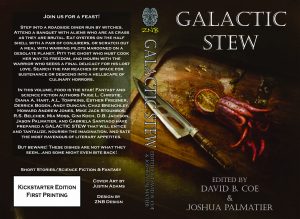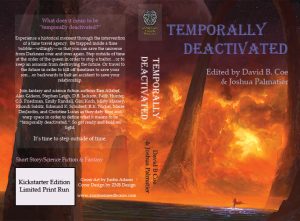Okay, serious question: When did the world get so insane?
When did people start believing wackadoodle conspiracy theories while refusing to believe that wearing a mask over their nose and mouth would keep them from spreading germs that come from their nose and mouth? When did they start believing a President who says that Democrats at the DNC refused to say “under God” during the Pledge of Allegiance, despite the fact that we have video showing them saying “under God” during the Pledge of Allegiance each night of the convention?
When did people who believe in strength and faith and patriotism start to worship a President who blames everyone else for his failings, uses churches and the Bible as props, and seeks help from foreign powers in order to win domestic election campaigns?
When did the richest country in the world, the self-proclaimed greatest nation on earth, become so clusterfucked, so dysfunctional, that it would find itself leading the world in Covid-19 cases and deaths?
How did this happen? I really want to know.
I hated Ronald Reagan – I know many consider him a great President and even liberal historians cite him as a hugely consequential one. But I was in college and grad school during his Administration, and I despised him. And yet, I cannot imagine Ronald Reagan letting Russia get away with placing bounties on the lives of American soldiers.
I hated George H.W. Bush, too. I cannot imagine him allowing efforts to protect people from a lethal virus to be hamstrung by liberty junkies and science deniers who put their own hang-ups before the public good.
I couldn’t stand George W. Bush and I believe he was a terrible President. I cannot imagine him coddling white supremacists, praising anti-Semitic marchers, demonizing immigrants and peaceful protesters.
I grew up in a Democratic household – we ALWAYS supported Democratic candidates for all offices. But we understood that having two vibrant parties made our nation stronger. Just like the Yankees need a strong Red Sox team to make their successes meaningful, so the two parties need each other to engender of productive debate over how to govern a sprawling republic. I cannot imagine the Republicans I recall from my youth – Howard Baker, Alan Simpson, even Barry Goldwater – tolerating, much less enabling, the malfeasance, racism, and disregard for Constitutional norms that we see from this Administration.
We have faced crises before. We have had Presidents of both parties who lied to us, who held beliefs that to this day make my skin crawl, who were overly partisan and too obsessed with their own electoral prospects.
We have never had a President who lied as frequently or as blatantly as this one. We have never had a President who was so willfully ignorant and lazy. We have never had a President who was so corrupt and who surrounded himself with so many crooks and liars and incompetents.
But beyond all of that, we have never had a President who demonstrated such utter disdain for the norms of republican government, for the Constitutional principles that have guided our elected leaders for more than two centuries.
America, it turns out, is far more fragile than we thought. Yes, we survived a Civil War, and a Constitutional crisis in the 1970s. But we are in danger of seeing our democracy collapse because this President recognizes no limits on his power and refuses to acknowledge that Congress and the Courts are co-equal branches of the government. Without respect for our institutions and governing laws, he will soon make us nothing more than another failed state, another moral backwater ruled by a kleptocratic despot.
That day, I fear, is far closer than any of us imagined it would ever be. This President is willing to use the Department of Justice as his own personal consigliere. He believes the armed forces exist to impose his will on the people he is supposed to serve. He sees in every act of governance an opportunity to enhance his family’s wealth. He has far more in common with the tin-pot dictators of what we used to refer to, in our arrogance, as “the Third World,” than he does with any of his predecessors. And his reelection would be a death blow to all that we Americans have held as sacred and good in our system of government.
These are the thoughts – the terrors – that consume me on this, the first day of the Republican National Convention. No, I will not be watching, thanks very much.
But I did watch the DNC last week. I have given to the Biden-Harris campaign. I have volunteered to write letters to voters in swing states on behalf of the Sierra Club.
What have you done?
Have a good week.









 What is the difference between an idea and a story? It sounds like a basic question, but we have just begun the
What is the difference between an idea and a story? It sounds like a basic question, but we have just begun the  I have touched on the subject of creative ideas in other Writing-Tip Wednesday posts this year (
I have touched on the subject of creative ideas in other Writing-Tip Wednesday posts this year (
 The Yankees were playing the Minnesota Twins, a powerful team lead by perennial all-star Tony Oliva and future Hall of Fame slugger Harmon Killebrew. The Twins jumped out to an early lead, gave a run back, but still led 2-1 in the fifth inning, the second inning of Mantle’s stint as coach. The Yankees managed to load the bases and, with two outs, their left fielder, a guy named Roy White, stepped to the plate.
The Yankees were playing the Minnesota Twins, a powerful team lead by perennial all-star Tony Oliva and future Hall of Fame slugger Harmon Killebrew. The Twins jumped out to an early lead, gave a run back, but still led 2-1 in the fifth inning, the second inning of Mantle’s stint as coach. The Yankees managed to load the bases and, with two outs, their left fielder, a guy named Roy White, stepped to the plate.